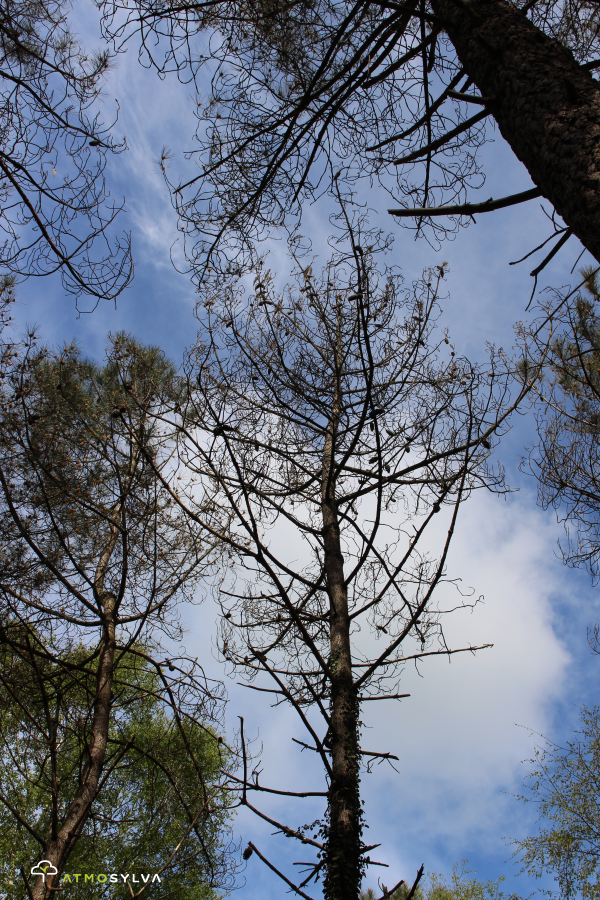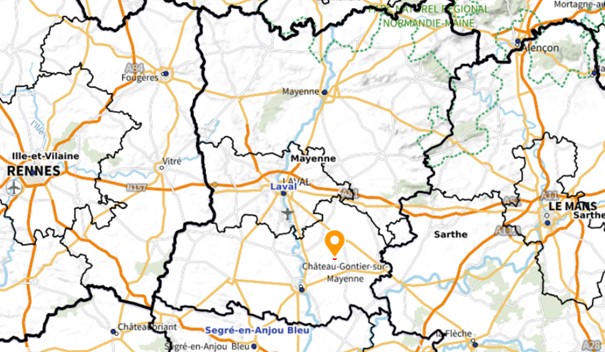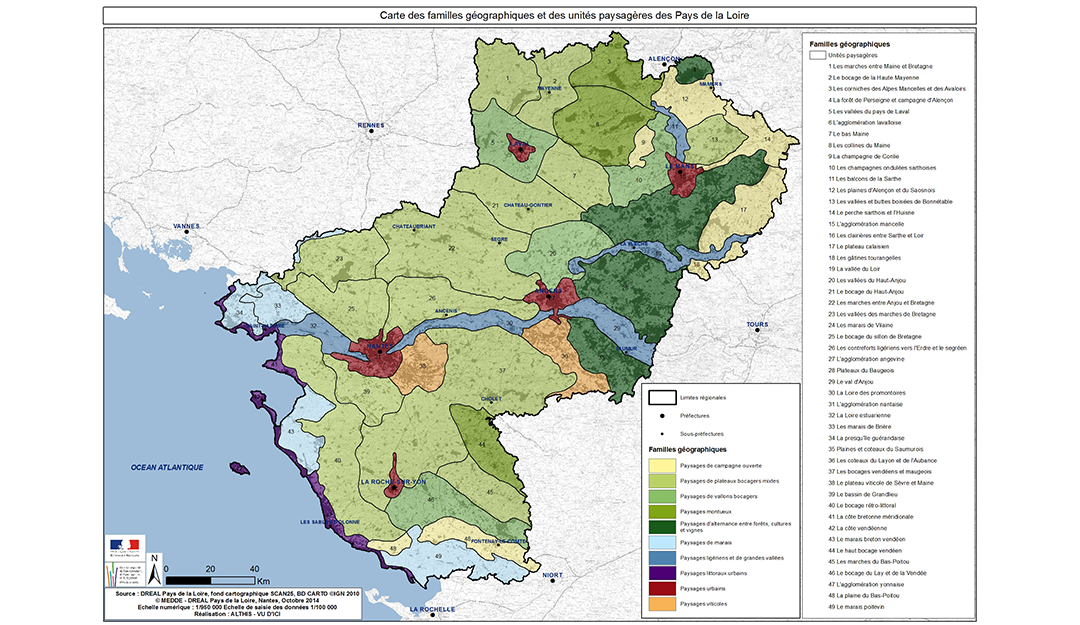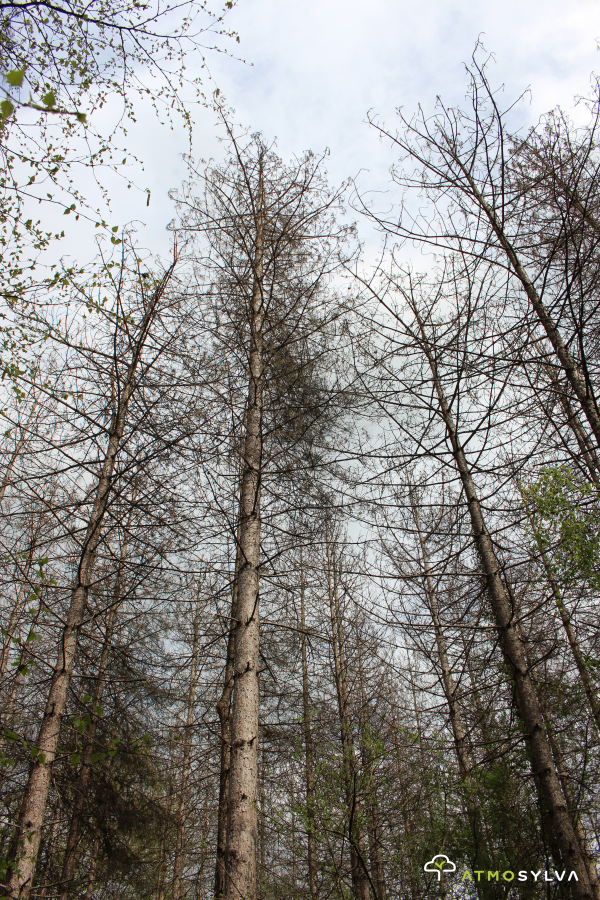Reforestation Gennes-Longuefuye - dieback
The aim of this project is to restore a stand of severely decayed Maritime and Laricio pines by introducing species that are better adapted to local conditions and climate change. The reforestation is based mainly on deciduous species - Sessile Oak and Pubescent Oak - selected for their ability to establish themselves sustainably on this type of soil. Complementary species such as Atlas Cedar and Sequoia sempervirens are included to encourage habitat diversification and ensure greater stand resilience.
The site will be managed in such a way as to preserve the existing forest pools, which are essential to local biodiversity, and to maintain the border trees and birch trees near the pools. The project is part of a sustainable forest management approach, with rigorous monitoring of young plantations to ensure the gradual reconstitution of a more resilient and diversified forest ecosystem.
Mayenne is a department where forest cover remains particularly low, with only 8% of the area wooded, compared with 31% nationally. Located in the south of the department, the project takes place in the Bocage angevin, a region characterised by the presence of sparsely divided forest areas and silvicultural management concentrated among a small number of owners.
This area is part of the Armorican bocage sylvoécorégion to the north-east, where plateaux interspersed with valleys form a landscape marked by fragmented woodland, in contrast to the vast bocages of the neighbouring Vendée region.
The project is located in the Bois du Puy ZNIEFF, a small forest on sandy and gravelly soils, home to a variety of vegetation, including oak groves and chestnut groves. This ecologically important site is home to rare botanical species and several butterflies of regional importance. Reforestation, by diversifying the species and preserving the forest pools, will help to promote resilience and local biodiversity.





